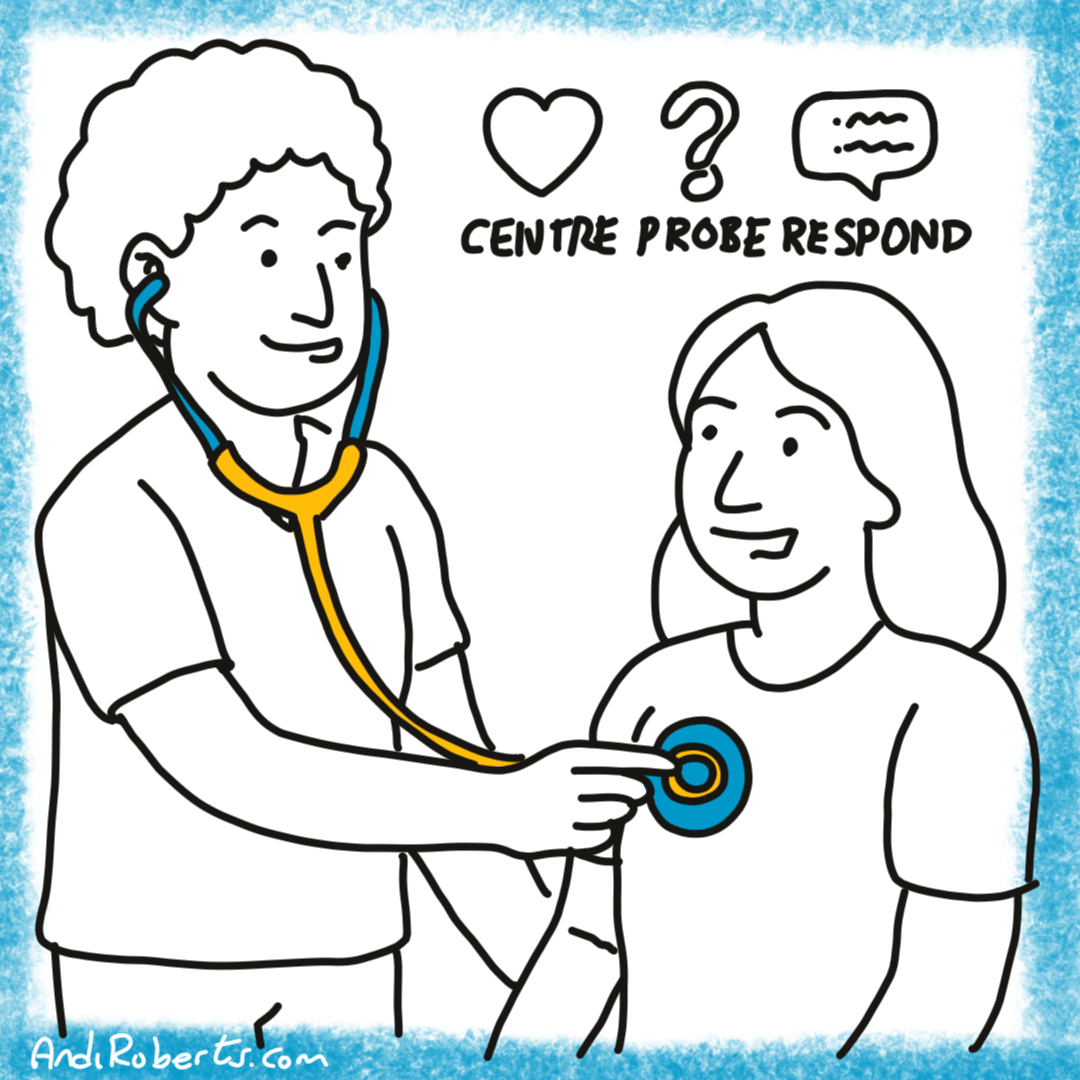Every team knows the frustration of meetings where the energy is lost almost before it begins. Facts, emotions, opinions and criticisms collide all at once. The loudest voices dominate, the most cautious cut down ideas before they have had any time to breathe, and valuable perspectives are overlooked. Leaders often find themselves in the role of referee rather than guide, trying to control the noise instead of creating conditions for insight.
Edward de Bono’s Six Thinking Hats, first published in 1985, remains one of the simplest and most elegant ways to change this dynamic. It separates out the natural but often conflicting modes of human thinking and turns them into six clear roles. Each hat represents a perspective that is worn for a time: factual, emotional, optimistic, cautious, creative or process-driven. The leader, acting in the Blue Hat role, chooses the order in which the hats are worn so that the group moves together through a sequence of thinking.
The strength of this method lies in its simplicity. Rather than people pulling in different directions, everyone in the room wears the same hat at the same time. This avoids the usual clash of perspectives and gives space to each form of thinking in turn. What emerges is not a compromise but a richer balance of insight. For leaders, the hats offer not only a language but also a discipline for designing conversations that actually fit the purpose of the meeting.
The six hats in practice
The Blue Hat is the conductor. It manages the process, chooses the sequence, sets the rhythm, and ensures that outputs are turned into commitments. In practice this might mean saying, “we have explored benefits for ten minutes, now let us move to risks, and afterwards we will return to creativity.” Without the Blue Hat, the method reverts to open debate. With it, the group experiences the rare clarity of moving together in one direction at a time.
The White Hat represents facts and evidence. This is the time when speculation is suspended and the group asks what it truly knows, what it does not know, and how reliable the information is. The leader must be alert to claims that sound like facts but are actually assumptions. If someone says, “our customers will not like this,” the White Hat question is, “what evidence do we have for that and how strong is it?” The strength of the White Hat is that it grounds the conversation. The weakness is that it can drift into arguments or predictions. The leader’s task is to keep it focused strictly on information.
The Red Hat is for emotions and intuition. In many organisations feelings are hidden behind rational arguments, yet they influence decisions all the same. The Red Hat legitimises emotions by giving them a proper place. It allows someone to say, “I feel uneasy about this,” or “I am excited by this idea,” without having to justify themselves. Leaders can invite people to speak briefly from instinct or even use silent voting to capture emotions anonymously. The point is that feelings are recognised as valid data. If they are denied, they seep into other parts of the conversation and distort the process.
The Green Hat is for creativity and new possibilities. Here the group is asked to generate alternatives without judgement. This is the moment for brainstorming, using analogies, or any tool that encourages divergent thinking. In highly analytical environments this can feel uncomfortable because critique is suspended, yet its value is significant. Ideas are not evaluated in this phase, they are only collected. Later the group will apply caution, but for now the leader must protect this space so that imagination can flourish.
The Yellow Hat is for value and benefits. It asks what is good about an idea, where the opportunities lie, and who would benefit. Many groups are skilled at spotting flaws but less comfortable at naming what could work. The Yellow Hat forces people to imagine what success might look like and to describe why an idea is worth pursuing. Its risk is empty optimism, so the leader needs to encourage specificity. It is not enough to say something is a good idea. The question is, “for whom and how would this be realised?”
The Black Hat is for caution and risk. It names weaknesses, obstacles and threats. Every organisation needs this perspective because it prevents costly mistakes. Yet it is also the hat most easily abused. When it dominates, creativity suffocates and decisions stall. The leader must reframe it as constructive. The task is not to veto but to stress-test. Black Hat thinking should be precise: what is the risk, how likely is it, how serious is the impact, and what mitigations exist. Used in this way, the Black Hat strengthens ideas instead of undermining them.
6 hat sequences for different purposes
The hats are not designed to be used in isolation but as a sequence. The order is what gives the conversation its shape and balance. Begin with the Black Hat and negativity sets the tone. Begin with Yellow or Green and the group enters with possibility before caution is applied. The sequence a leader chooses sends a message about what the meeting is for.
1) Exploring initial ideas: Blue → White → Green → Blue
When ideas are still forming, a light sequence is enough. The Blue Hat frames the purpose, the White Hat clarifies what is known, the Green Hat generates possibilities, and the Blue Hat closes with agreed next steps. This reassures participants that the conversation is structured without being heavy.
2) Choosing between alternatives: Blue → White → (Green) → Yellow → Black → Red → Blue
When selecting among options, the sequence needs more balance. Blue frames the choice, White clears the facts, Green enriches the options, Yellow explores benefits, Black highlights risks, Red captures instinctive reactions, and Blue closes with decisions. This prevents criticism from arriving too soon and ensures both rational and emotional criteria are considered.
3) Identifying solutions to an issue: Blue → White → Black → Green → Blue
Here it helps to start with White Hat to establish the facts. Black Hat then highlights the constraints that must be overcome. Green Hat generates ideas that specifically address those constraints. Blue Hat captures the agreed actions. This sequence has the advantage of turning risk into a creative challenge.
4) Providing quick feedback: Blue → Black → Green → Blue
Feedback often defaults to criticism. This short sequence keeps it constructive. The Black Hat identifies the issue, the Green Hat immediately generates an alternative, and the Blue Hat ensures closure. The strength of this sequence is that every criticism is paired with an improvement.
5) A full strategic planning process: Blue → Yellow → Black → White → Blue → Green → Blue
Strategy needs ambition and realism. The Yellow Hat establishes vision, the Black Hat surfaces risks, the White Hat tests assumptions with data, the Blue Hat integrates insights, the Green Hat generates initiatives, and a final Blue Hat sets priorities and assigns responsibility. The rhythm of this sequence reflects the flow of strategy: ambition, realism, evidence, creativity and execution.
6) Process improvement: Blue → White → White (external views) → Yellow → Black → Green → Red → Blue
Improvement benefits from both internal and external data. Yellow Hat acknowledges strengths, Black Hat pinpoints weaknesses, Green Hat generates improvements, Red Hat surfaces how people feel about the process, and Blue Hat closes with commitments. This sequence creates a balance between fact, feeling and creativity.
7) Solving business problems: Blue → White → Green → Red → Yellow → Black → Green → Blue
Problem-solving is often iterative. After clarifying facts, the group generates first ideas. Red Hat checks intuition, Yellow evaluates benefits, Black identifies risks, Green refines solutions in light of what has been learned, and Blue closes with a plan. The repeat of Green reflects the reality that solutions evolve through cycles of creativity and critique.
8) Carrying out a performance review: Blue → Red → White → Yellow → Black → Green → Red → Blue
Performance reviews are as emotional as they are rational. Beginning with Red Hat allows feelings to be voiced at the start. White Hat anchors the discussion in evidence, Yellow Hat names strengths, Black Hat addresses development needs, Green Hat invites co-creation of strategies, a second Red Hat allows closing reflections, and Blue Hat ensures clarity on goals. This structure recognises that performance is both emotional and factual.
Using the hats in conflict
Conflict often demonstrates the value of the Six Hats most clearly. Disputes escalate because people speak from different modes at once. One cites facts, another expresses emotion, a third critiques, while someone else jumps to solutions. Each is valid, but together they produce entrenchment.
The Six Hats provide an order that defuses this. The Blue Hat sets the rules: one perspective at a time. The White Hat clarifies facts that both sides accept. The Red Hat legitimises emotions, allowing anger or frustration to be voiced openly. The Yellow Hat identifies positives in the relationship that can be built upon. The Black Hat gives space for concerns. The Green Hat moves the group into creative problem-solving. Finally the Blue Hat closes with agreements and next steps.
This process does not erase conflict but reframes it. Instead of a battle of positions, the conflict becomes a joint exploration. Participants see that their facts are acknowledged, their emotions heard, their concerns validated and their creativity invited. Often this is enough to turn destructive conflict into constructive resolution.
Closing reflections
The Six Hats are most powerful when leaders see themselves not as referees but as conveners. Their responsibility is not to determine who is right, but to shape the rhythm of the discussion so that every perspective has its moment. Preparation matters. Leaders who clarify the purpose of the gathering, choose a sequence in advance, and introduce the hats in plain language help participants understand that this is not a contest but a way to think together. Sometimes it is even more effective to rotate the Blue Hat role, giving different members the chance to guide the process. This spreads responsibility and strengthens ownership.
The Six Thinking Hats endure because they offer more than a clever image. They are a practical discipline for turning confusion into clarity, defensiveness into balance, and conflict into collaboration. Thinking is not an accident. It can be designed. With the hats, even the most difficult discussions can be reframed as opportunities for progress.
This also invites reflection. What kind of conversations do you usually lead, and how often do you find yourself managing tension rather than guiding flow? In your team, whose voices carry weight and whose are barely heard? Looking back at recent discussions, did facts, feelings, risks and possibilities each receive their place, or were they tangled together in ways that drained momentum? Which hat comes naturally to you, and which do you tend to avoid?
The real test of this approach lies not in knowing it, but in using it. The question for any leader is simple: what sequence could you design in your next conversation that would allow your team to think differently, rather than revisit the same ground? Try it once, and notice what changes.
Do you have any tips or advice on this topic of thinking and discussing topics in different ways?
What has worked for you?
Do you have any recommended resources to explore?
Thanks for reading!
References
De Bono, E. (2000) Six thinking hats. Revised and updated edn. London: Penguin.





Leave A Comment